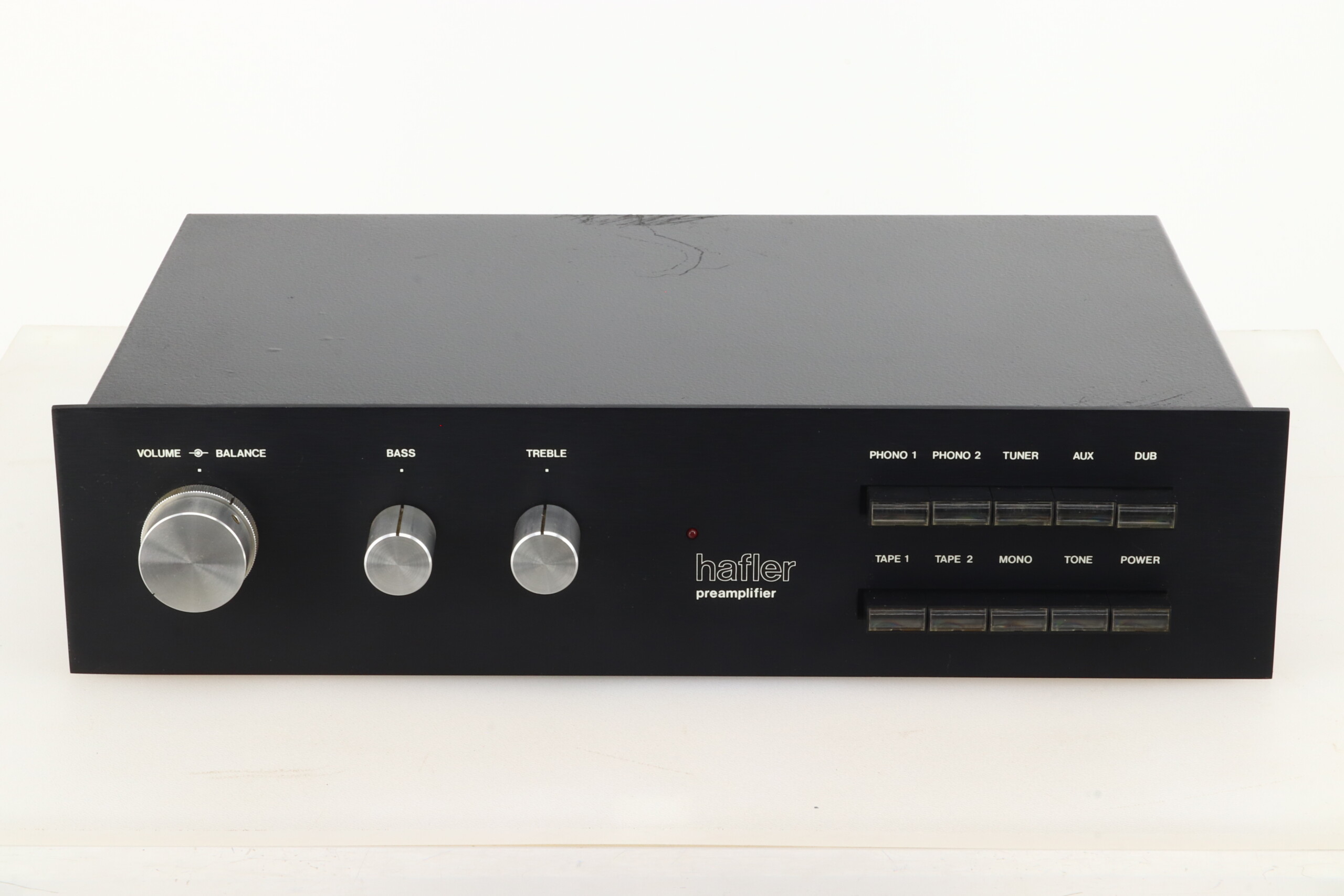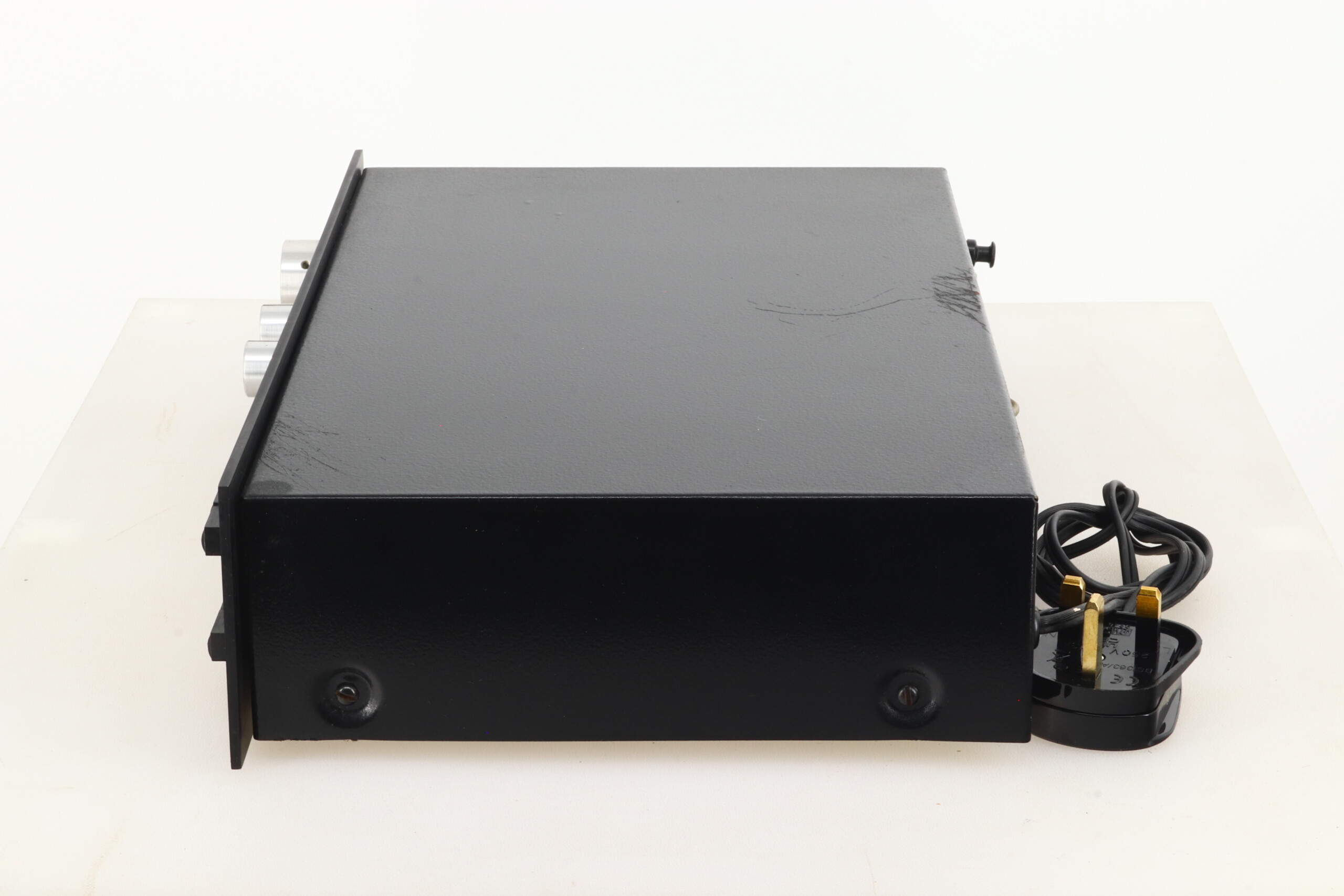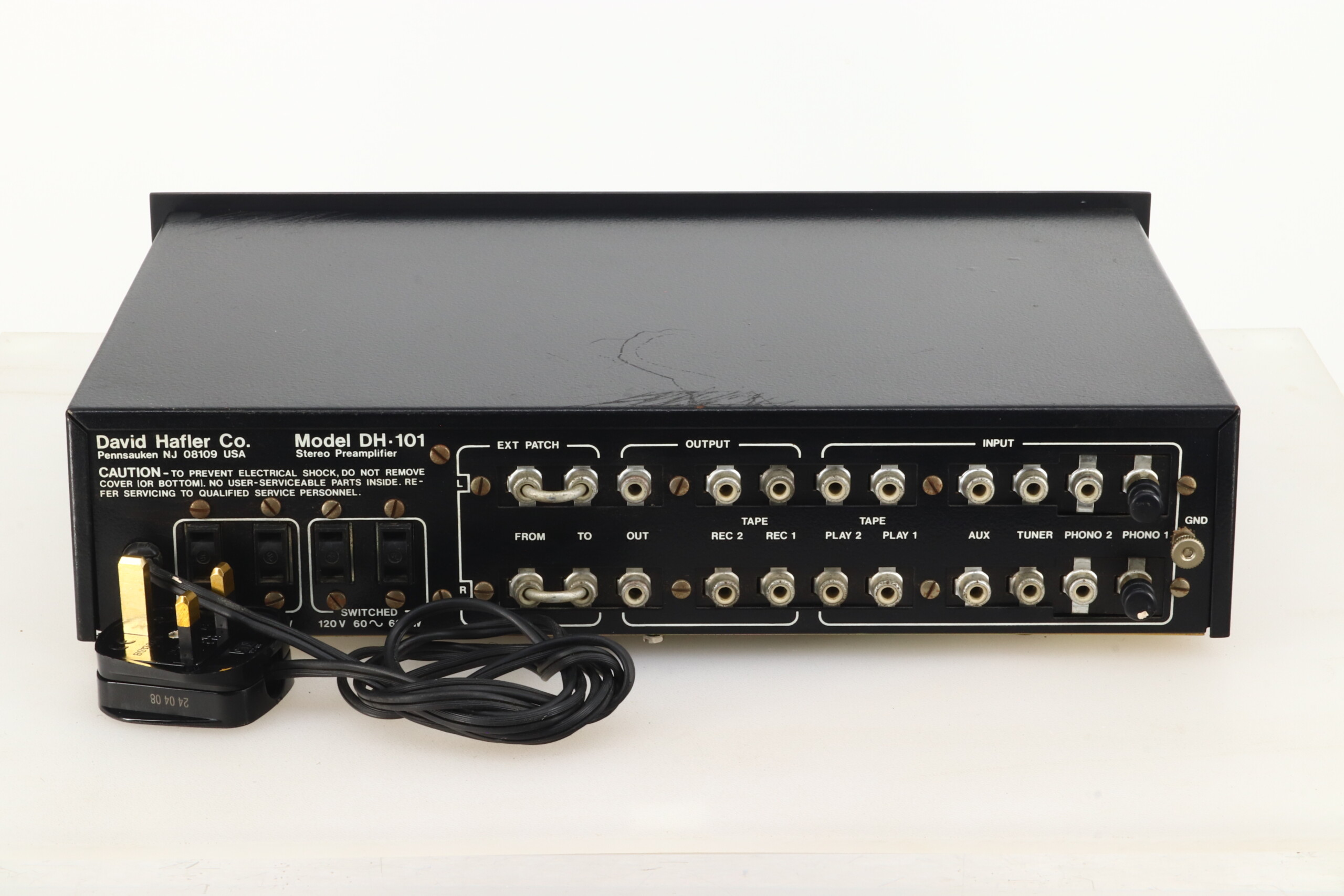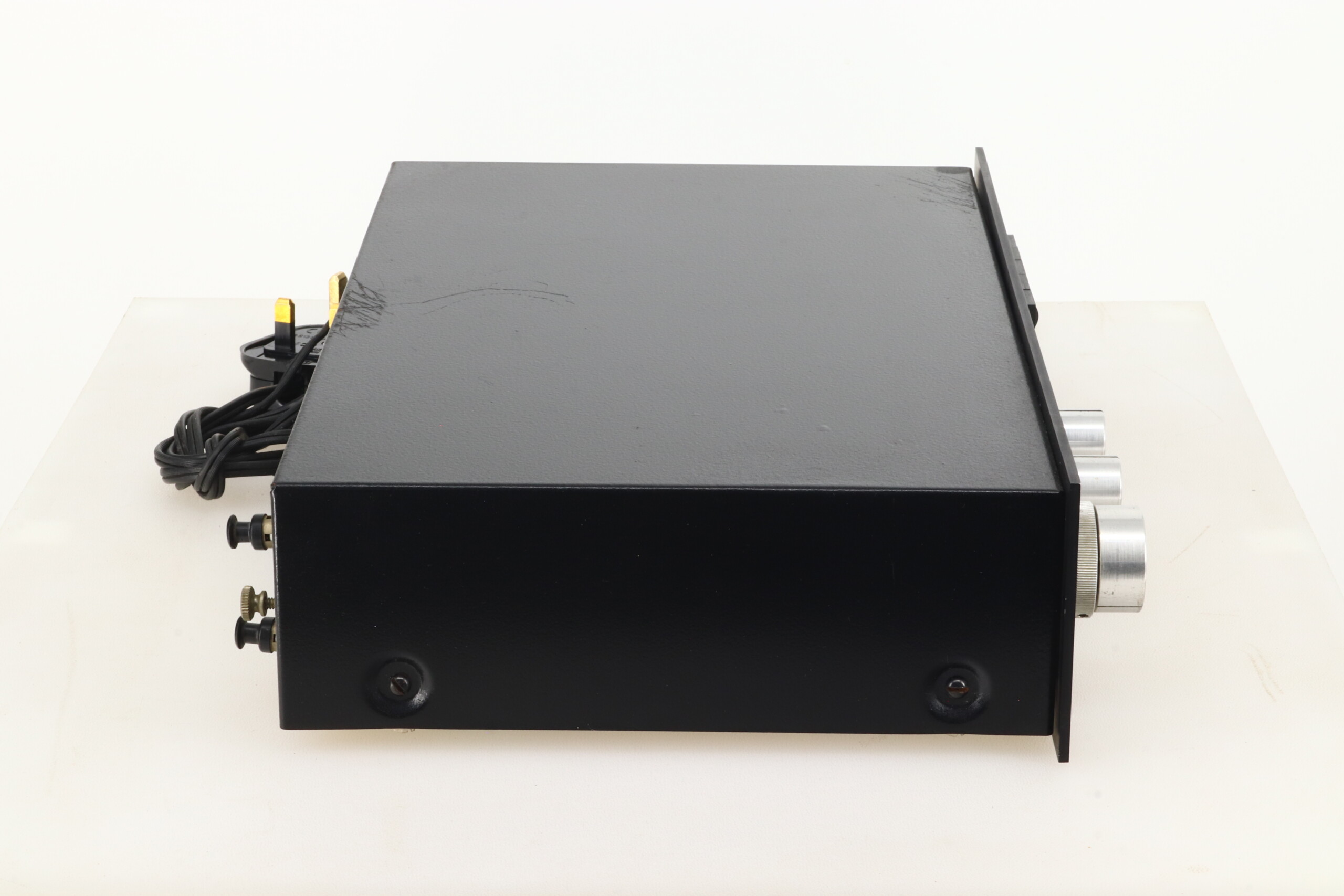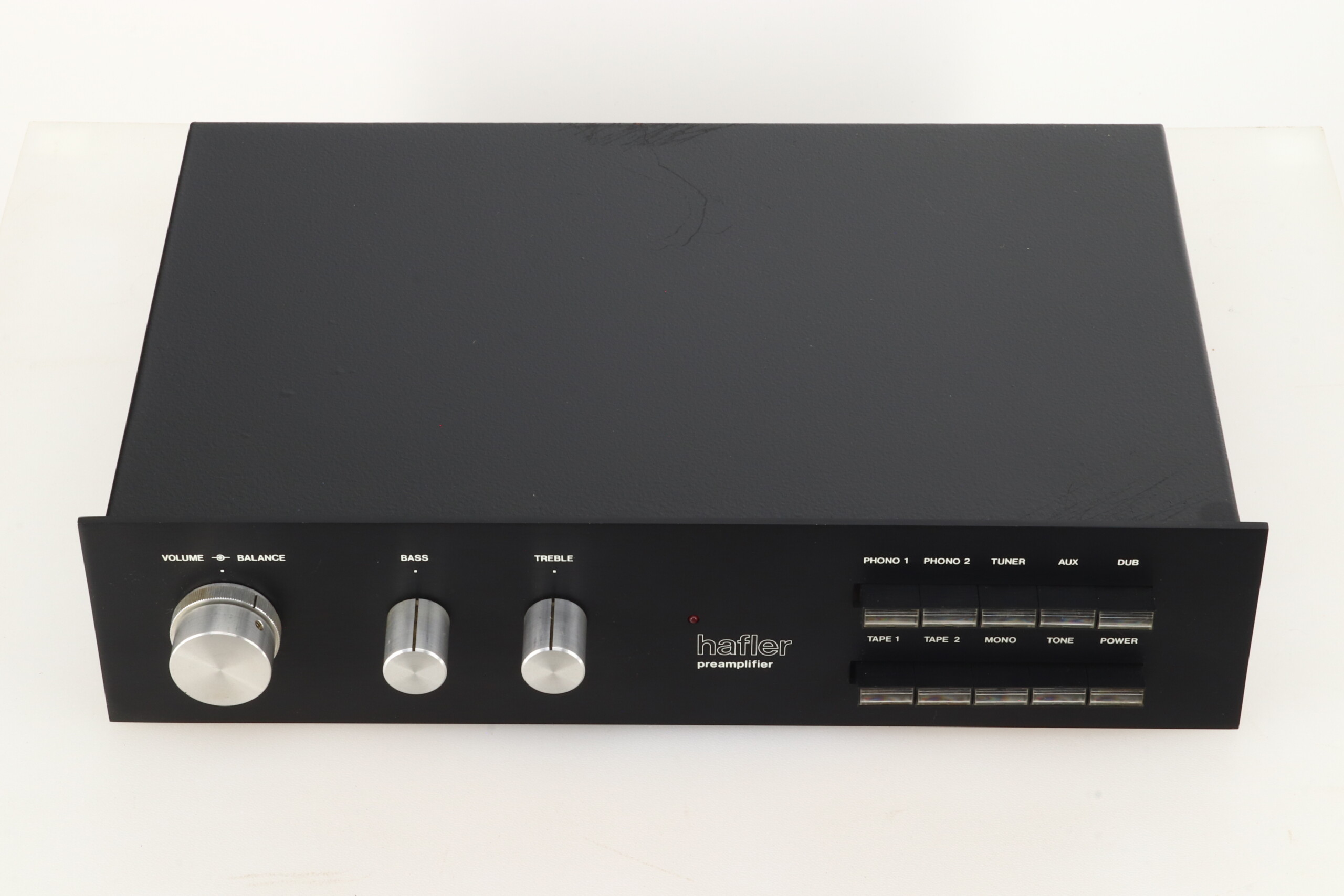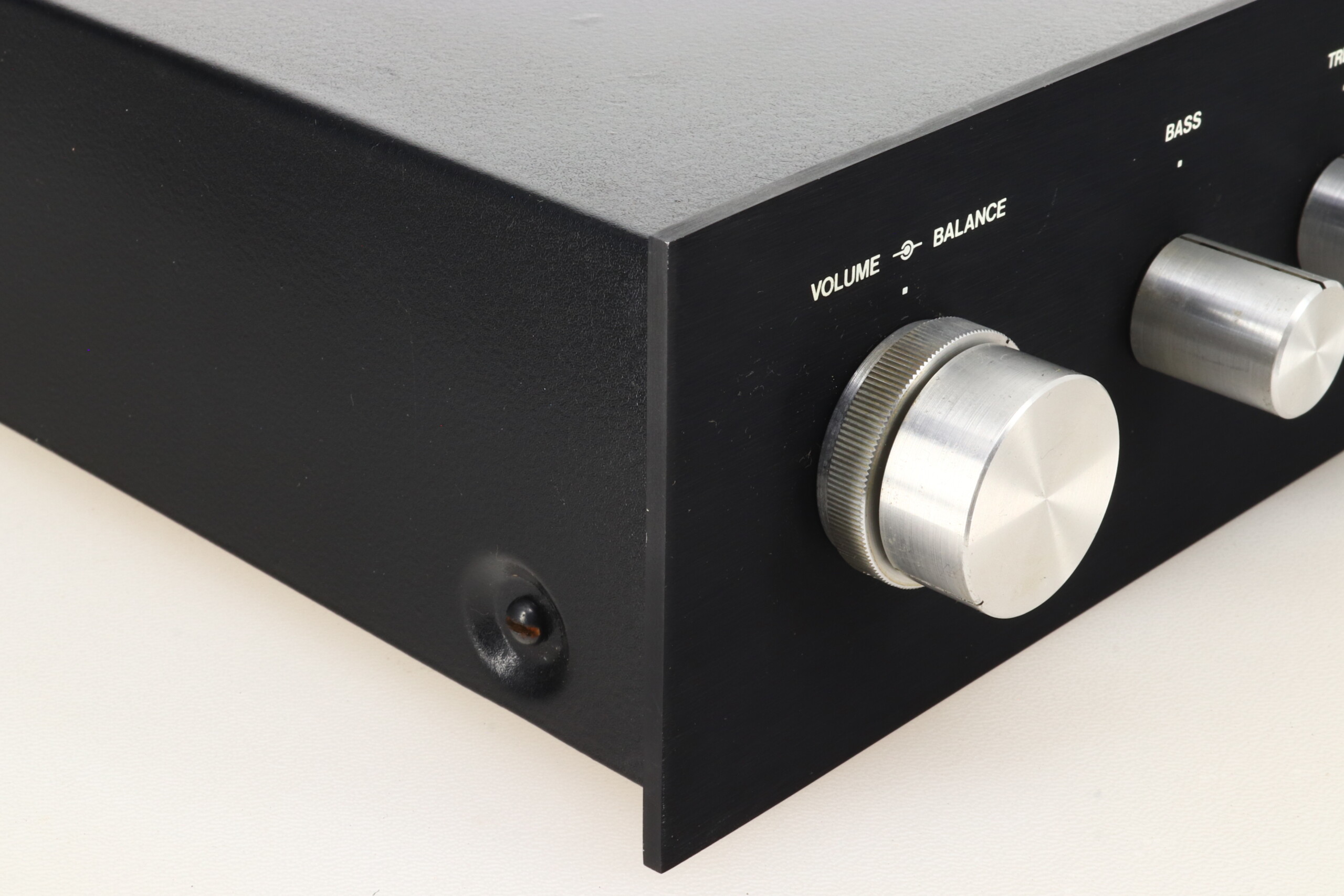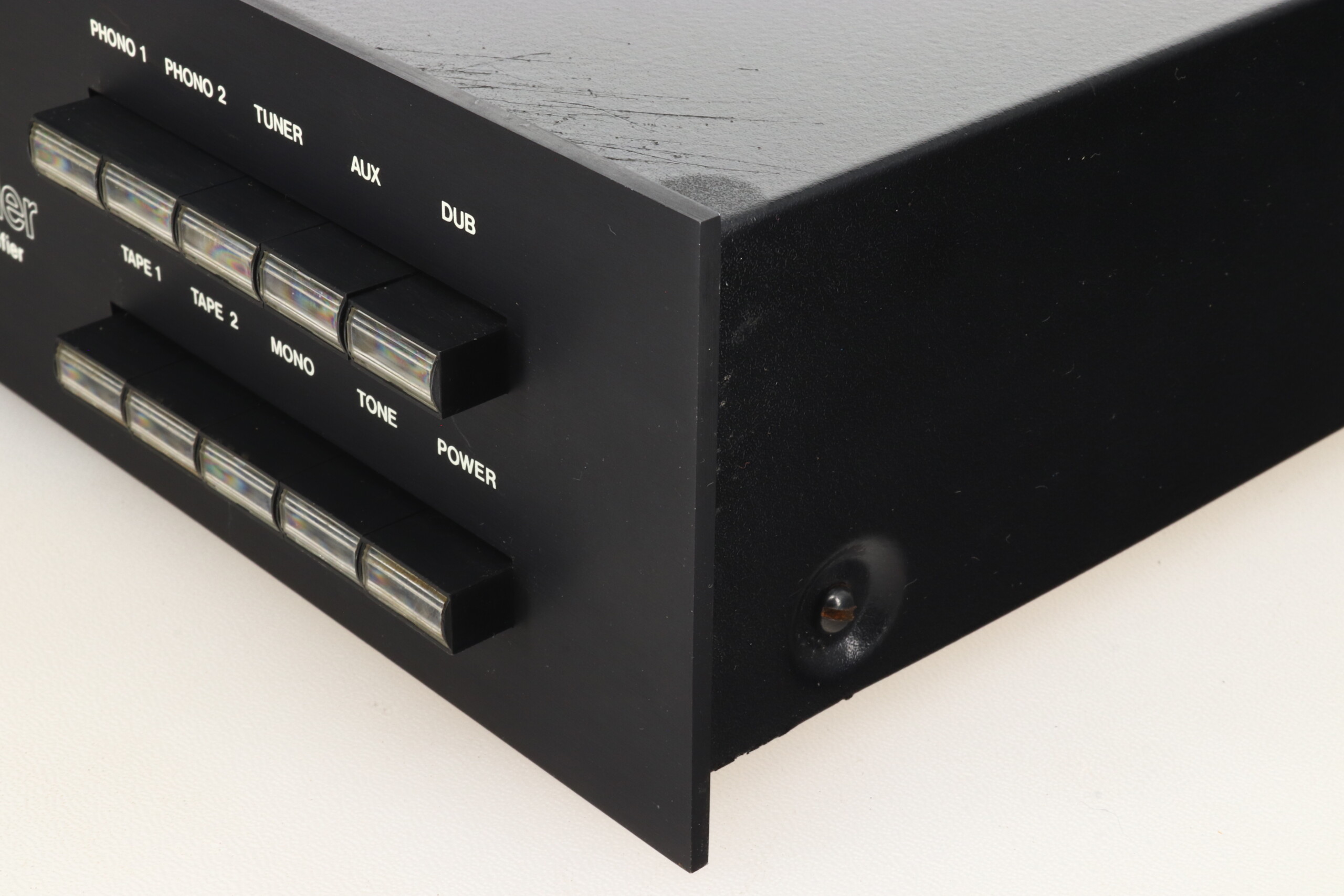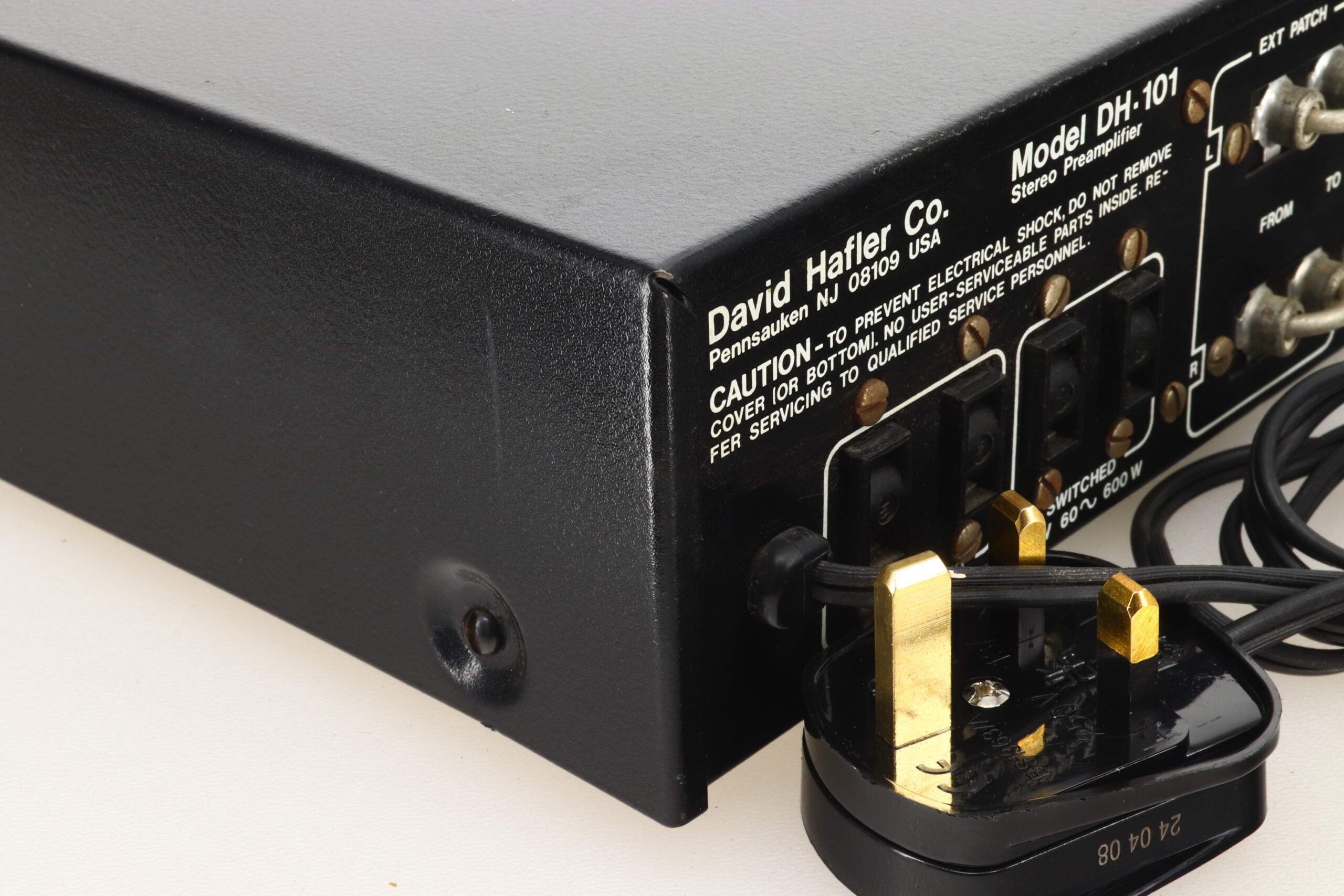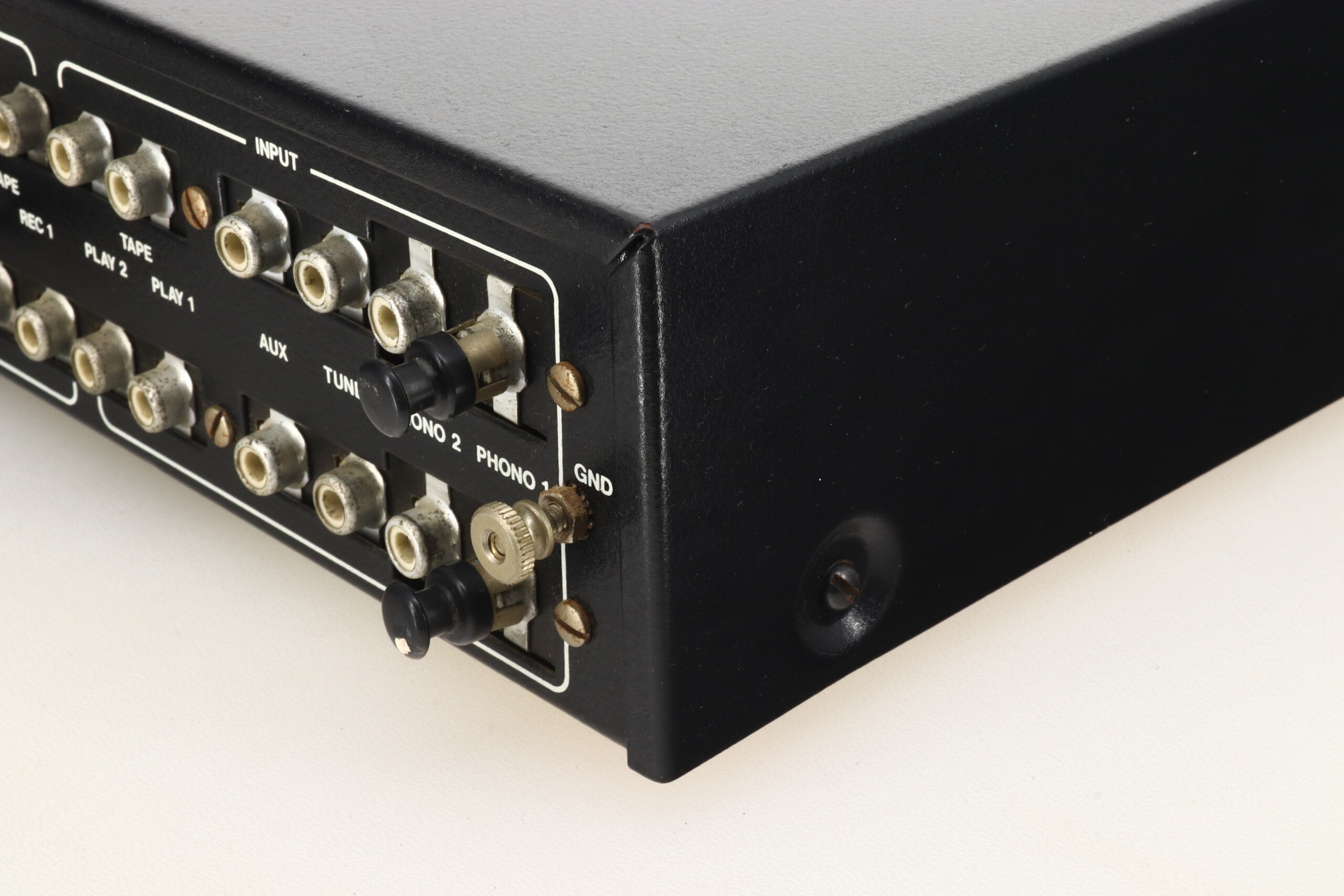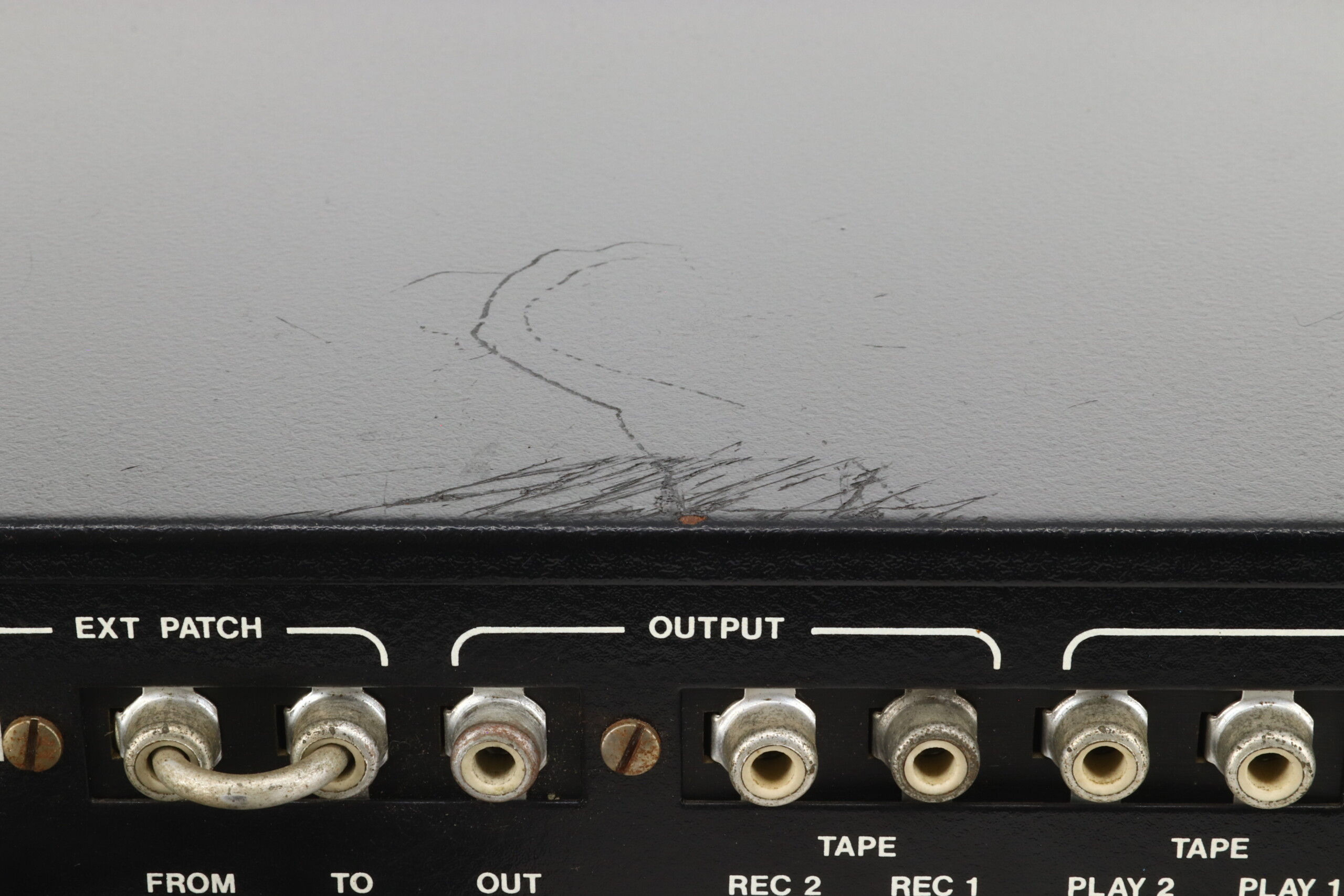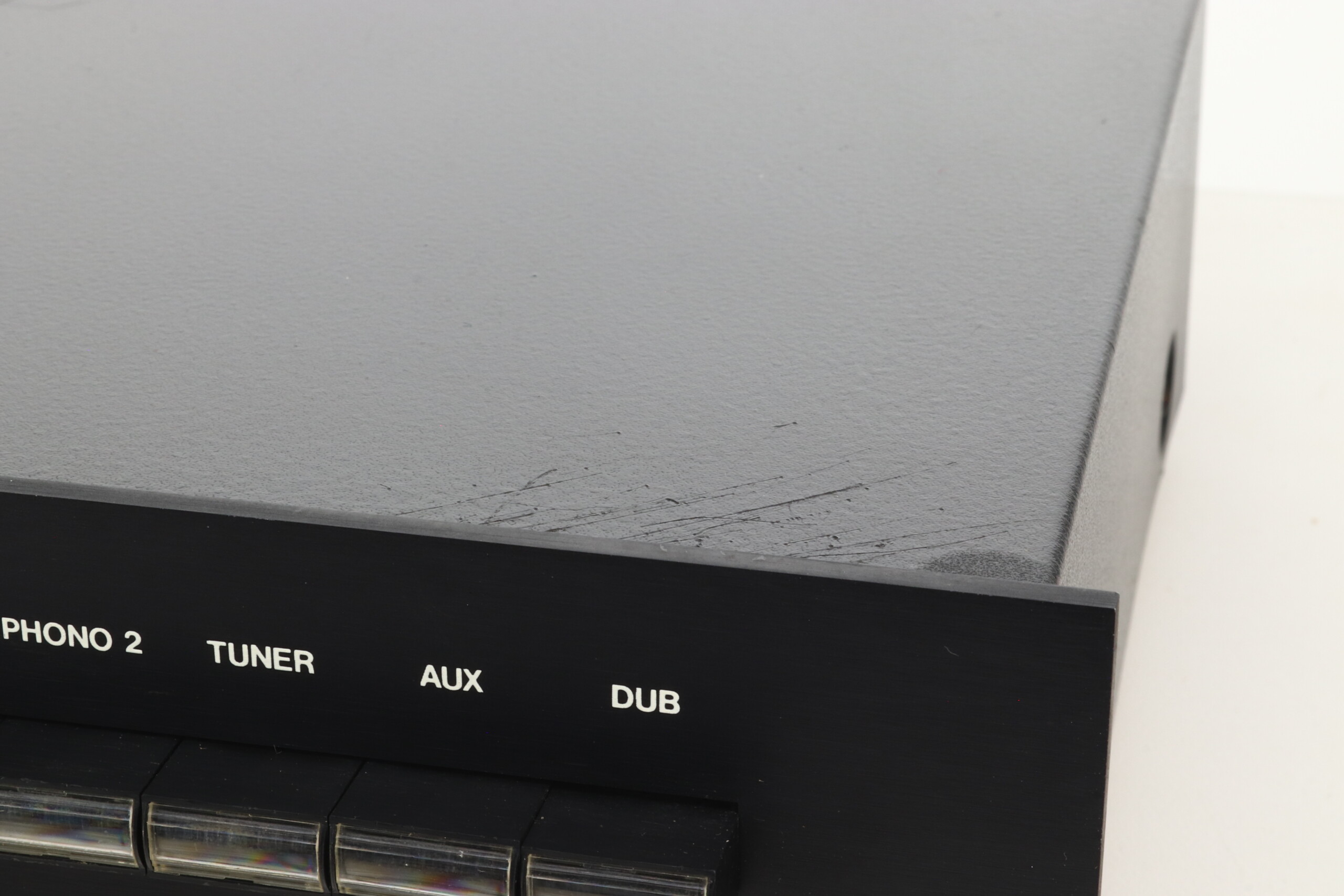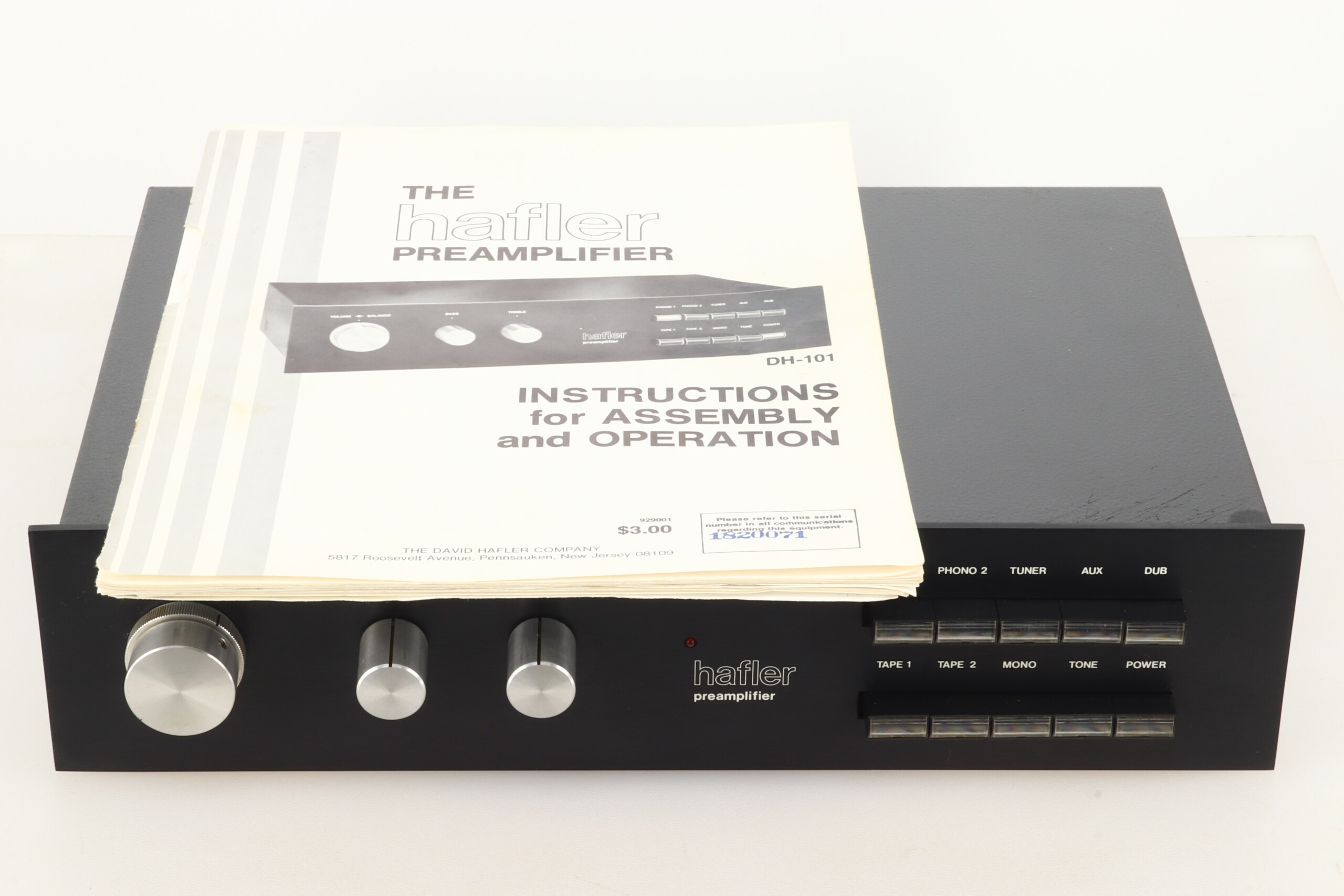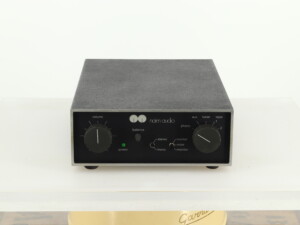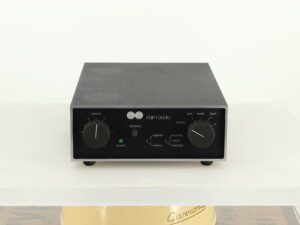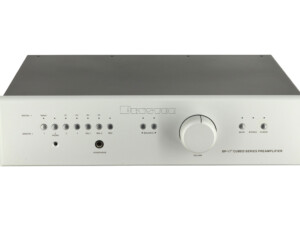Your basket is currently empty!
Hafler DH-101 Pre Amplifier
£159.00
Manufacturer : Hafler
Model : DH-101
Serial Number : 1820071
Packaging : N/A
Accessories Included : N/A
Price When New :
1 in stock
Description
Here we have a vintage DH-101 pre-amplifier from American specialists the David Hafler Company. The origins of this amplifier are believed to date back to the late seventies so it comes as no shock really that there are a few probably age related marks on our unit, however it is in fully working condition. It will be supplied professionally packaged along with our usual three month warranty.
The company said….
The David Hafler Company is a consumer oriented company whose goal is to provide the finest possible high fidelity components at moderate cost. Although the company is new, its principals have demonstrated their ability to attain that goal over more than twenty-five years in the high fidelity industry during which period the products marketed have achieved international recognition for quality and value.
The sceptic will ask how better equipment can be provided for less money in today’s competitive market. Well, there are several explanations. Skilful design, patiently reworked and distilled to reduce excessive componentry, can provide fine performance without excessive cost. Equally skilled design can reduce cost by eliminating the need for careful adjustment of circuit parameters to get the ultimate performance. Lastly, designing the unit to be assembled as a kit is possible because of those same steps; and that, of course, gives a significant saving of labour cost. Therefore, the Hafler products follow this design philosophy; and they provide matchless specifications, outstanding sonic quality, and custom grade components along with moderate cost which is further reduced if they are assembled from kits rather than being purchased already assembled.
The preamplifier is the device which contains the operating controls for the high fidelity system, and it is the connection point for all the accessory equipment such as turntables, tape recorders, tuners, etc.
The preamplifier normally contains two sections, one a low level, high amplification, section which amplifies the very small signals from phonograph cartridges and equalizes them to provide the standard playback characteristic as prescribed by the RIAA. The other section is a moderate level, moderate amplification, section which amplifies the already partially amplified signals from such devices as tape decks and tuners. In addition to these two sections of electronic amplification, the preamplifier contains the switches for selection of device to be played, the tone controls, and the other facilities required for flexible high fidelity reproduction.
It is possible to have the preamplifier incorporated into the amplifier and/or tuner. However, State of the Art equipment generally utilizes separate components of preamplifier, tuner, and amplifier to achieve maximum quality, flexibility, and the ability to change and upgrade the system. Further, the person who already has a receiver with a high quality tuner and amplifier can generally improve the quality of his system by adding an up-to-date high quality external preamplifier to replace the internal one while still utilizing his tuner and power amplifier.
The most important functions of the preamplifier are to amplify without noise, with minimum distortion, with precision of frequency control (particularly of the recording playback characteristic) and with full consideration of the user’s requirements for flexible switching and control.
The Hafler DH-101 stereo control unit has been developed with the objective of producing the most accurate sound quality possible at the present state of the art. In recent years, the trend has been toward equipment with ever lower levels of distortion – but distortion, as conventionally measured, has not been indicative of the quality of the sound. The greatest portion of today’s top grade equipment has been produced with fine test specifications, but with the assumption (rather than actuality) that the fine specifications automatically provide excellent sound quality.
Some innovative companies have produced esoteric and costly designs for amplifiers and preamplifiers with claims of better sound. It has become evident that the conventional measurements and specifications do not describe sound quality. Although poor specifications are generally correlated with poor sound, good specifications do not necessarily guarantee good sound. Until now, the components which are associated with state of the art sound quality are too costly for most of the market, and it is unfortunate that cost has been taken as one of the criteria for state of the art componentry.
Since the aim is to attain fine sound quality at moderate cost, considerable investigation has been conducted to determine which design features result not only in good test specifications but also in sound which is a precise and accurate replica of the original. We have found that certain performance criteria outside of the conventional audio band have a profound effect on the clarity, smoothness, and overall naturalness of the audible sound. Ultrasonic intermodulation(USIM), for example, will not show up on conventional tests; but some of the resulting distortion products are in the audible range, and they blur the sound or add harshness to it.
We have applied subtle and sophisticated tests to learn to correlate what we hear with what we measure, and these tests have helped us to select design configurations which not only have outstanding and unsurpassed test specifications but also sound better. Sceptics will question this claim, and we invite them to listen carefully before
reaching a conclusion. We have stood the test of very critical listeners who approached the DH-101 with the attitude that it would be good, but not audibly better than other preamplifiers. Many people have erroneously developed the concept that there is no further room for improvement in the sound quality of electronic designs (although they readily acknowledge that loudspeakers and other electro mechanical devices have room for improvement). So far, however, we have found that the quality of the DH-101 is apparent to those who listen regardless of their preconceived ideas.
Specifications:
Phono Preamp Section
Type: Discrete transistor
Rated Output: 3 volts, 10 Hz to 100 kHz
Maximum Output: 7 volts, 20 Hz to 20 kHz
Distortion: Less than 0.0006°/o @ 1 kHz and 3 volts out
Slew Rate: 12 volts per microsecond
Phono Overload: 180 mV @ 1 kHz; 1.8 volts @ 20 kHz
Phono Cartridge Interaction: @ 20 kHz none
Hum And Noise: ”A” weighted 86 dB below 10 mV 1 kHz input
Frequency Response: 40 Hz to 15 kHz ± 0.5 dB
Gain: 34 dB@ 1 kHz
Input Impedance: 47 kΩ in parallel with 270 pf
Tone Control Section And High Level Amplifier
Rated Output: 3 volts, 10 Hz to 100 kHz
Maximum Output: 7 volts, 10 Hz to 100 kHz
Distortion: Less than 0.001% 20 Hz to 20 kHz
Slew Rate: 12 volts per microsecond
Rise Time: 2 microseconds
Hum And Noise: ”A” weighted 90 dB below 1 volt
Frequency response: + 0.0, – 0.25 dB 20 Hz to 20 kHz
Gain: 20 dB ± 1 dB
Input Impedance: Greater than 25 kΩ
Bass control: ± 12 dB @ 50 Hz
Treble control: ± 10 dB @ 20 kHz
AC voltage: 100 – 130 and 200 – 260, 50/60 Hz
Power consumption: 3.5 watts
Size: 350 (W) x 213 (D) x 83(H) mm
Weight: 3.6 kg

